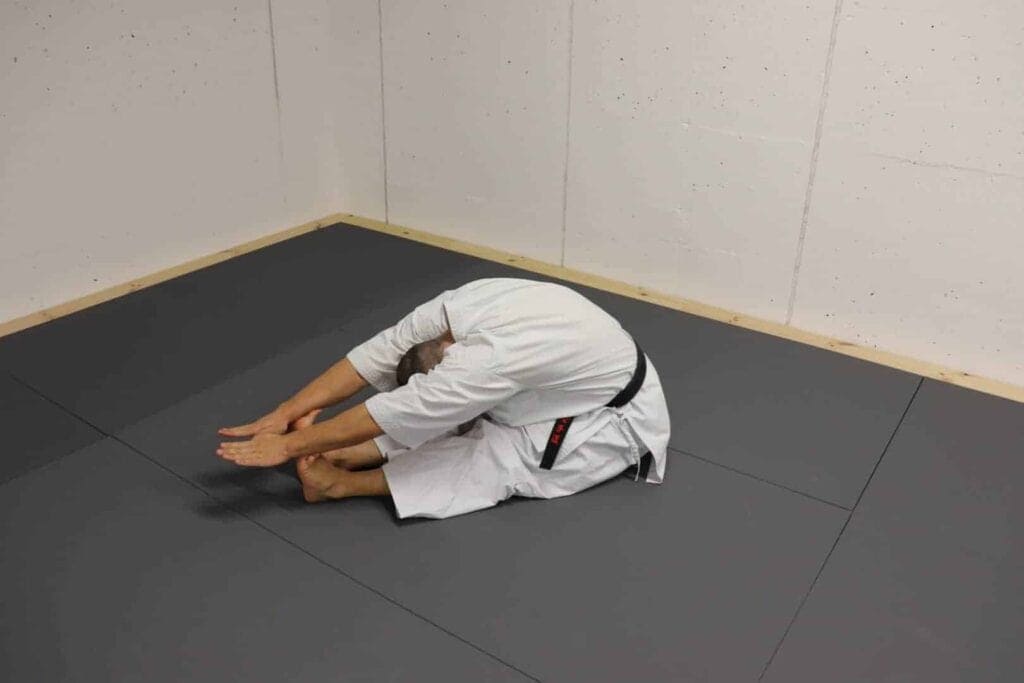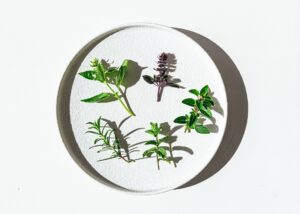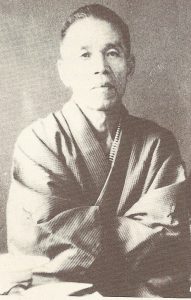Do-In has its origins in the ancient traditions of the Far East, but today it is learned and practiced by more and more people in both the Eastern and Western worlds. We owe the introduction of Do-In in the West in large part to the teachings of Niyoiti Sakurazawa (George Ohsawa), his staff and students.
What is Do-In
In order to realize and maintain the harmony of the one infinite universe, opposing forces and tendencies attract each other in order to achieve a balanced state.
This flow of movement of universal attraction between different forces and tendencies is called “love” in our human language. Therefore love is universal and imperishable, it arises everywhere and at all times, between man and woman, carbon and oxygen, electrons and protons, low pressure and high pressure, cold and hot, slow and fast, plus (+) and minus (-) in electricity and magnetism, dark and light, north and south, east and west, spirit and matter, between long and short waves, whenever and wherever all the relative manifestations of opposing tendencies attract each other to produce harmony.
The rediscovery of Do-In after the Second World War
It was Master Ohsawa who sent his disciples into the world to teach macrobiotics to humans. This also includes the Do-In exercises. Most of these ancient macrobiotic exercises had largely been lost in many areas, although some of them were practiced by a small number of honest-seeking people in the Far East. The entire range of Do-In exercises is not limited to just the various sequences of exercises. These traditional macrobiotic exercises are in fact the origin of many physical, emotional and spiritual exercises, which are divided into various forms of meditation, zazen, reciting mantras, yoga exercises, the Asian martial and self-defense arts, as well as other methods subdivide the self-development.
The origin of Do-In
The origin of Do-In is quite simply our intuitive development and adaptation in order to maintain and further develop ourselves in the ocean of universal life or the infinite universe. For this reason, the historical origins of Do-In is unknown, but it has been preserved from generation to generation in mankind. The origins of Do-In certainly go back 10,000 years in history.
What does the word Do-In mean
The word composition DO-IN means “a path to health and happiness”. Do means way. And In means happiness and health. Do-In is a Japanese term from Japan and is closely related to Shiatsu.
The meaning of Dô
In ancient China, people called the path of the sun “天道 (Tendô)”, “The way of heaven”, under the sky. The way of the earth was called “大道 (Daido)”, “The great way”, and the way through which all people walk “人道 (Jindo)”, “The way of men”.
All the traditional arts of Japan have one thing in common, namely the concept of the “path” (道 Sino-Japanese “Dô” or pure Japanese “Michi”). Ki-no-Michi. The way of Ki – or Aiki-no-Michi, the way of Aikido.
Do-In-Taiso
Taiso means gymnastics in the Japanese language.
There are many exercises and treatment methods to improve our physical, emotional and spiritual state: Western and Eastern medicine, psycho- and physiotherapy, psychiatric and physical treatments, the use of chemical and herbal medicines, as well as various techniques in the field of Eastern medicine, such as acupuncture, moxa treatment, laying on of hands healing and many others. Do-In, however, has unique characteristics compared to these different directions of physical, emotional and spiritual development:
- Do-In was developed by the old masters in an old time unknown to us through intuitive movements, which mean the natural self-adjustment reactions of every human being.
- Do-In, unlike many medical treatments, Asian martial arts, and other therapies that require the involvement of other people, is a complete self-exercise.
- At Do-In you don’t need any instruments, in contrast to acupuncture, moxa treatment and many other body therapies. Do-In only uses our own physical and mental functions, properly employed through self-adaptation.
- The Do-In exercises are aimed at our physical recovery and well-being, but they by far exceed the physical extent and also aim at the development of our mental and spiritual abilities to achieve a true human nature as a wholeness in all dimensions.
- The Do-In exercises can be performed from any location. As a result, they can easily become a part of our daily life.
- Do-In regards people not only as physical and material existences, but as a manifestation of the vibrational and spiritual movement that appears in the infinite vibrational and energy dimensions in the sea of the infinite universe.
- The Do-In exercises are carried out in harmony with the natural environment and use the most favorable time, place and position as well as natural phenomena such as the movements of the sun and wind.
Many people understand Do-In exercises as part of Shiatsu practice. However, this is far too short-sighted. The Do-In-Taiso (Do-In exercises) can, if used regularly, serve the development of our human development for physical strength, emotional confidence and mental clarity.
These exercises have always been traditionally used and developed by the people of the Far East. These exercises have been specially refined and put together as one of several Do-In exercise series that can easily be practiced by anyone in the early morning at sunrise. Each exercise should be performed like the smooth flow of clear water in a gentle stream, and our performance of the entire series should go from one exercise to another without any interruption, just as spring water gushes out from under the bushes in the mountains and forms a current that is perpetual flows downwards, accumulating masses of water and becoming a river that finally reaches the sea.
Here are some basic Do-In exercises:
- Sei-Za: The Natural Correct Posture and Natural Breathing.
- Mei-So-K o-Kyu: meditation and breathing
- Chin-Kon: The prayer of unity
- Haku-Shu: Cleansing by clapping your hands
- A-Um: Spiritualization through sound vibrations
- Ten-Ko: Beat the Heavenly Drum
- Ten-Ro: Drink the Heavenly Dew
- Kan-Ro: To taste the nectar in meditation
- Ten-Gaku: Listening to Heavenly Music
- Ko-Myo: See the Inner Light
- Wa-On: Sound harmonization
- Hei-Wa: pacify the world
There are tons of Do-In exercises. I will show you an exercise from Aikido (Aiki-Taiso – Kokyū-Hō).
Kokyū-Hō:
Kokyū-Hō are exercises in Japanese martial arts that promote breathing power (Kokyū).
In the training of Aikidō, corresponding exercises are often carried out, as they specifically strengthen the KI. The aim of the exercises is to unbalance the partner without using physical force. In doing so, the practitioner learns to feel the partner’s center of gravity exactly without his own muscular tension and to bring it out of balance by shifting it from its center of gravity.
Kokyū-Hō consists of two syllables: Kokyū denotes the development of energy through the force of breath; Hō means exercise, task. More precisely, Kokyū is the breath, Kokyū dōsa means breathing force movement from the Seiza, and Kokyū-Hō is an exercise for developing breathing force. Kokyū-Hō therefore means an exercise to develop the optimal application of force by means of breathing power.
Course of the exercise
Kokyū-Hō begins when performing in a sitting position, with both partners sitting on their heels (Seiza). Uke, in the role of the attacker, grabs both wrists of his counterpart. The Aikidōka or defending partner (Japanese Tori or Nage) then develops pressure with the direction of projection against the shoulders of the Uke. This pressure should be built up from the abdominal area in a relaxed position. This is done optimally by leaning your own weight relaxed against your partner. The relaxed leaning ensures a muscular stretching of the body parts involved. This relaxed posture is maintained in the exercise, as the application of muscular force through contraction would lead to undesirable body tension, which made perception and optimal implementation impossible.
By grasping both wrists, pressure is exerted from the center of gravity towards the uke’s shoulders. The symmetrical application of force with projection to the shoulders provokes Uke to the desired counter-pressure, but without significant muscle strength. The symmetrical counter-pressure of Uke can be manipulated by Tori (Nage) by slightly reducing the pressure on any side, but not converting it into a tensile force, as this reflexively led to counter-pull in Uke; the pressure should be maintained. The aim of this power steering is to unbalance Uke’s center of gravity. Due to the slight reduction in pressure, Uke does not perceive any change. He maintains the pressure on both sides. In reality, however, the shift in force has already set in, which causes Uke to tip over sideways.
In the course of the following movement, both turn to the side in the direction of fall from Uke. Uke lies on his back after tipping over to one side. Tori rotates synchronously and maintains the gentle pressure in the sequence, which Uke also tempts to maintain his counter-pressure, even in a lying position.

This exercise is repeated fluently. In the movement to sit on the Uke, the pressure is already built up again and can be used for repeated balance manipulation while the Uke is sitting up.








2 thoughts on “Do-In exercises for mental and physical development”
Thank you. Namaste Jean.
Have been following your telegram posts and they are right on–thank you, Andre, for helping to raise the vibration of our planet! Namaste